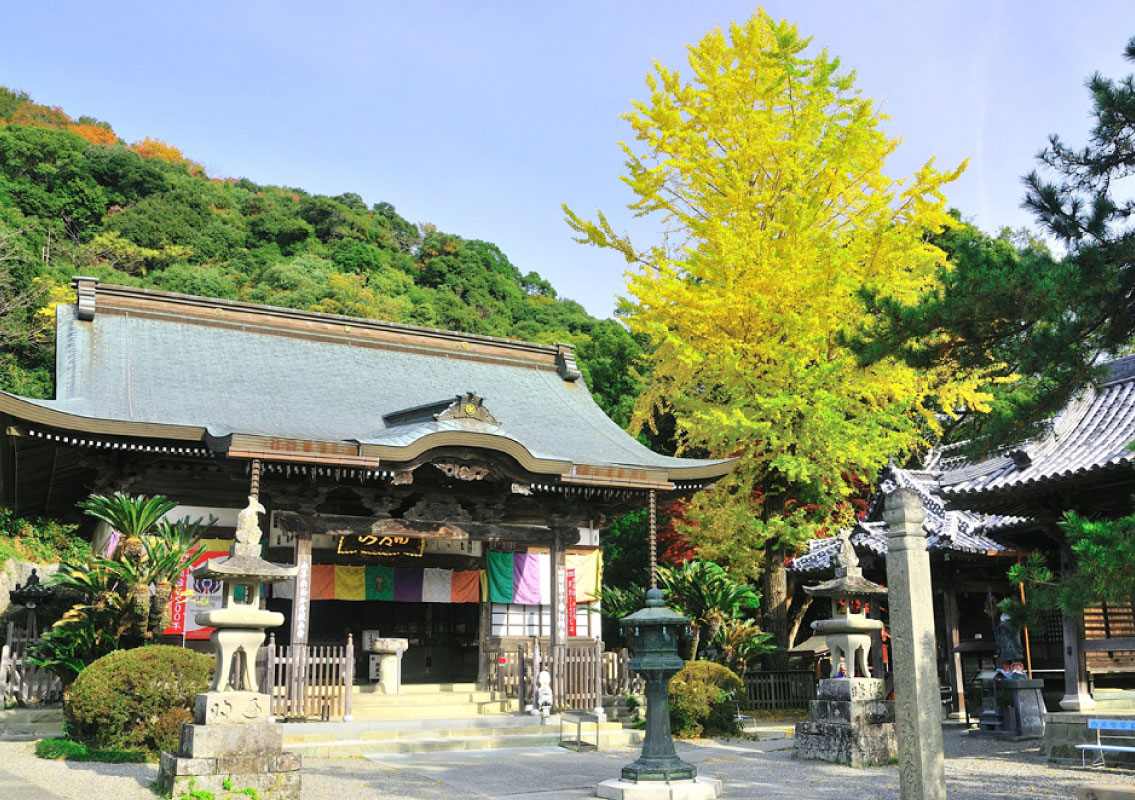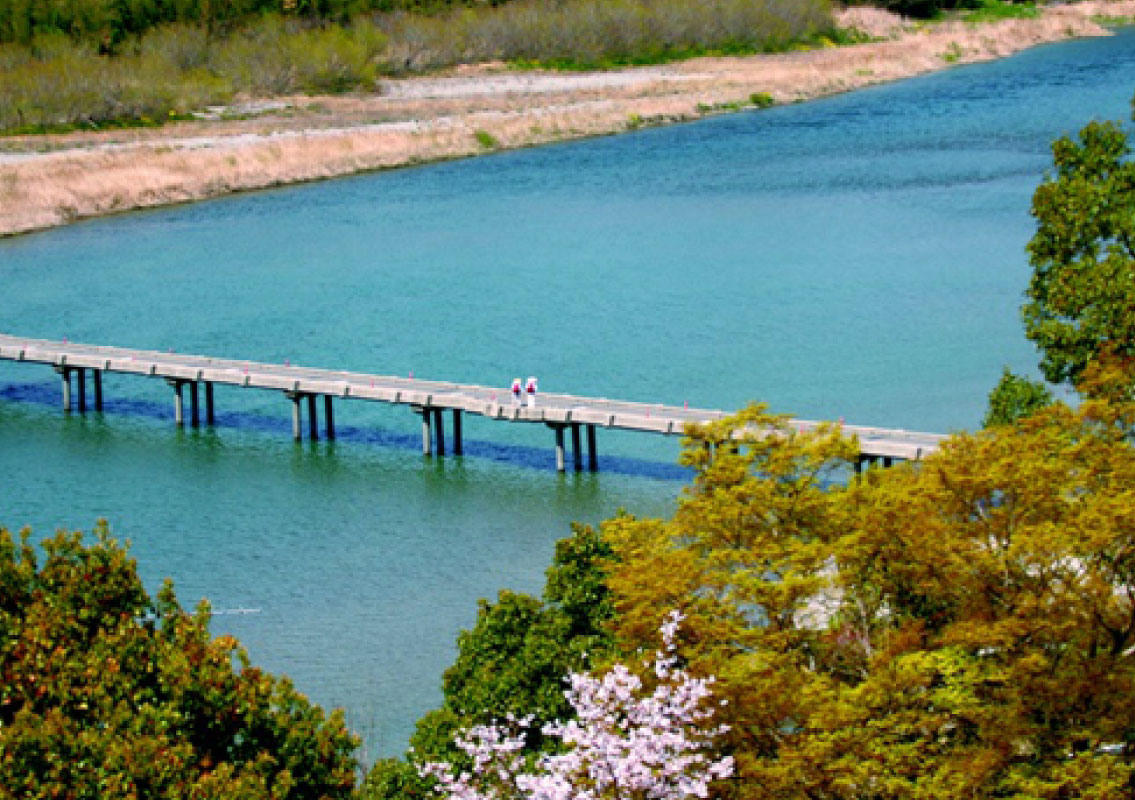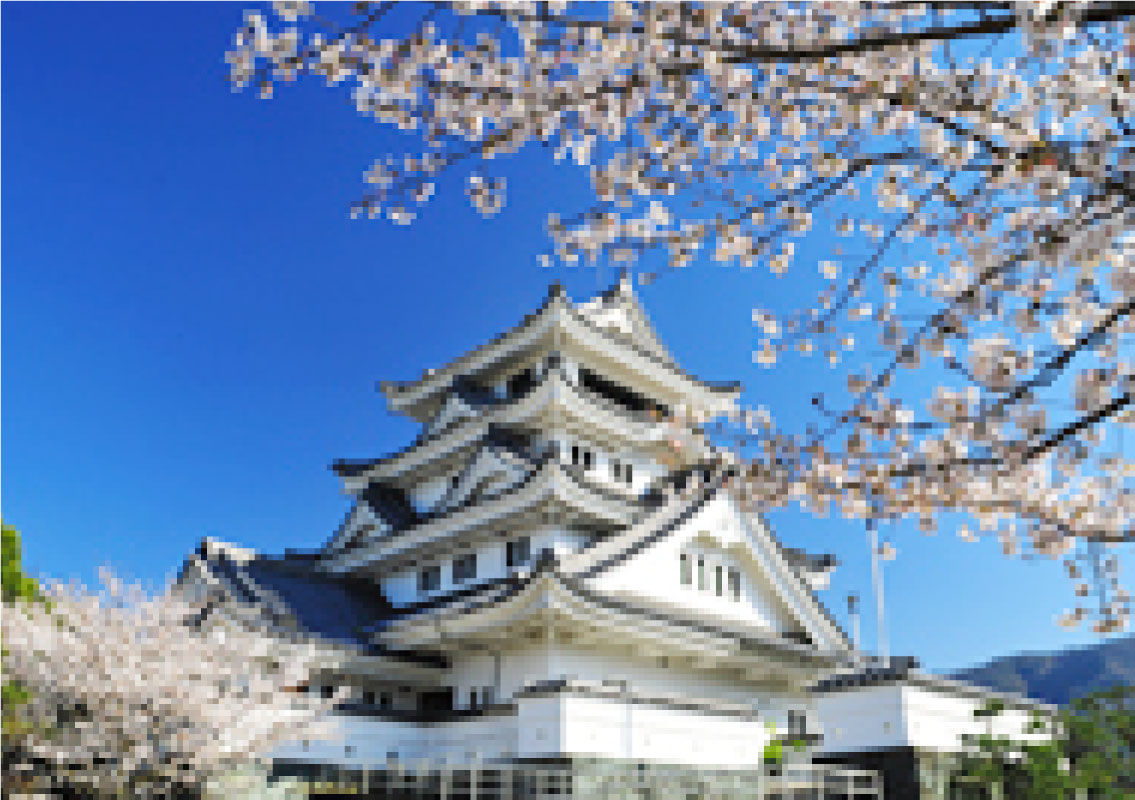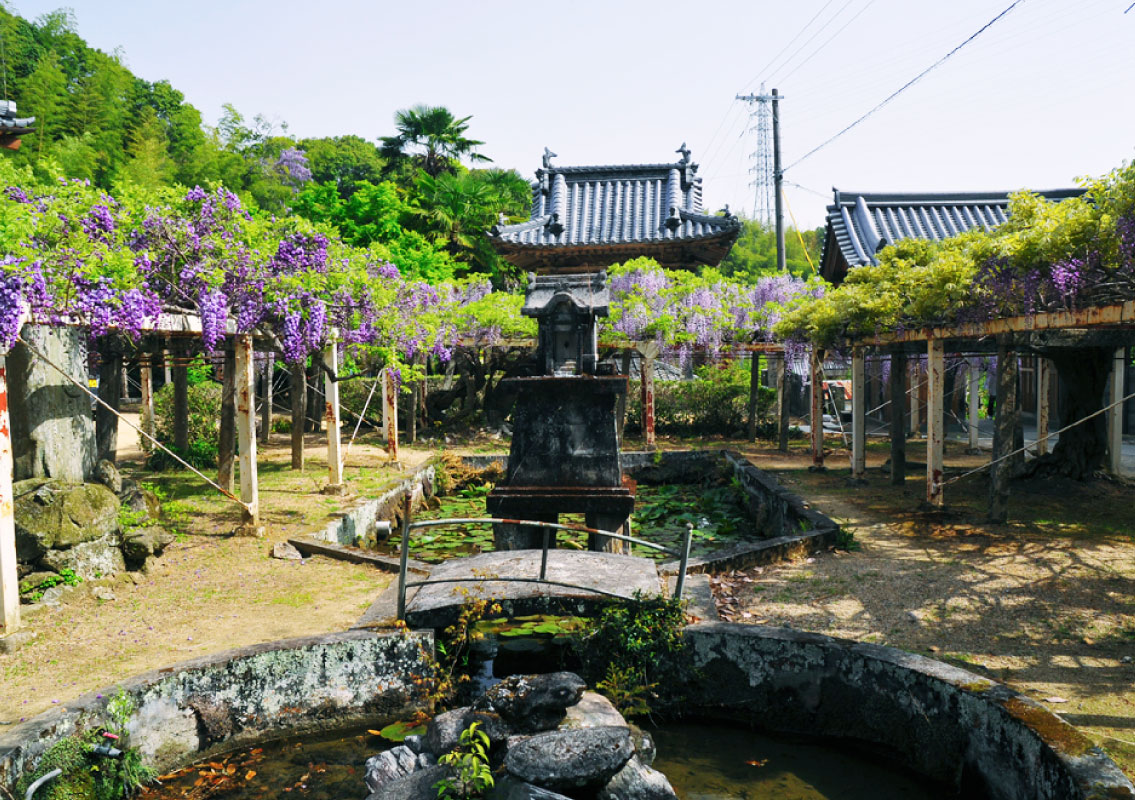A Talk with Shikoku Saburo Road

A Talk with Shikoku Saburo Road
As you head south past the narrow rows of houses from Kirihataji Temple, residences become increasingly sparse as you are eventually greeted by an area with expansive rural surroundings. From this hill, you can see the peaks of the Tsurugisan mountain range in the distance and enjoy a panoramic view of Mt. Bizan of Tokushima City from the especially beautiful Mt. Kotsu.
After passing through another rural area, you will reach the banks of Yoshino River. Here, the great Yoshino River flows around a vast delta known as the Zennyuji Island, which disperses the water around you. In fact, you may not even notice that you are in a river as you stand on the fertile land of the delta that spreads before your eyes. Eventually, you will reach Kawashima bridge, which is a low-water crossing bridge that is submerged underwater during heavy rain. If you get off the well-maintained banks, walk around the back of Shiroyama in Kawashima and follow the pilgrimage road, you will see the temple gate of Fujiidera Temple, the 11th temple of the Shikoku Pilgrimage.
A Talk with Shikoku Saburo Road(10.2km)

 Spots to photograph
Spots to photograph
If you wish to receive a certificate, please take a photo that includes yourself at the designated photo point for each course.
Nearby sightseeing spots

-
1
 Kirihataji Temple
Kirihataji TempleThe 10th of the 88 temples of the Shikoku Pilgrimage, Kirihataji Temple is located on the hillside of Mt. Kirihata with its conspicuous double-story pagoda as a major landmark. Its Daito has been designated an Important Cultural Property and is one of the three famous pagodas of Japan. The Daito was relocated to this temple in 1873 after it was donated to Sumiyoshi Shrine in Sakai by Tokugawa Hidetada. The Daito offers a stunning view of the ceaselessly flowing Yoshino River and the magnificent rows of mountains of the Shikoku mountain range before your eyes.
-
2
 Zennyuji Island (Awajima)
Zennyuji Island (Awajima)Zennyuji Island is Japan’s largest delta which measures 6 km from east to west, 1.2 km from north to south, and occupies an area of around 500 hectares. Although there are no houses on the island today, it used to be inhabited by more than 3000 villagers across 600 households in its heyday before the island’s residents were evicted in 1915. Although the vast fertile land of Zennyuji Island was mainly utilized for the cultivation of indigo and millet in the feudal era, it is currently still used for agriculture to grow healthy and delicious vegetables. July is the recommended month to visit the area as sunflowers will be in full bloom.
In addition, a total of five low-water crossing bridges (submerged bridges) provide access to the island, including three from the market area and two from Kawashima. Zennyuji Island is a refreshing place where you can come into close proximity with the magnificent Yoshino River and enjoy its extremely unique landscape that will trigger nostalgic memories of home.
-
3
 Kawashima Castle
Kawashima CastleKawashima Castle is the ruin of a medieval mountain castle along Yoshino River that is said to have been built by Kawashima Hyoenoshin, a local clan during the Sengoku period. As one of the nine Awa castles, it was assigned to be guarded by the chief vassal Hayashi Tadakatsu due to Hachisuka Iemasa entering the province in 1585. It then became an abandoned castle after the Ikkoku Ichijo Rei (Law of One Castle per Province) was passed in 1638. The façade of today’s Kawashima Castle was restored in 1981 as an outdoor facility for use by workers. It has been closed since April 2019 and no visitors are allowed to enter the castle premises, but you can still go near it and catch a glimpse of its past magnificence.
-
4
 Fujiidera Temple
Fujiidera TempleFujiidera Temple is the 11th of the 88 temples of the Shikoku Pilgrimage. Its premises house the Daishodo, the Niomon gate, a bell tower, and also serve as a famous spot for viewing cherry blossoms and autumn colors in addition to ancient wisteria plants that have been around for hundreds of years. The temple’s name was derived from the stunning wisteria (fuji) trellises along the path from the temple’s main hall to the scripture hall. The current principal image of the temple is a Yakushi-Nyorai statue with inscriptions by the Buddhist priest Keijin dating back to 1148, which has been designated as an Important Cultural Property of Japan.



